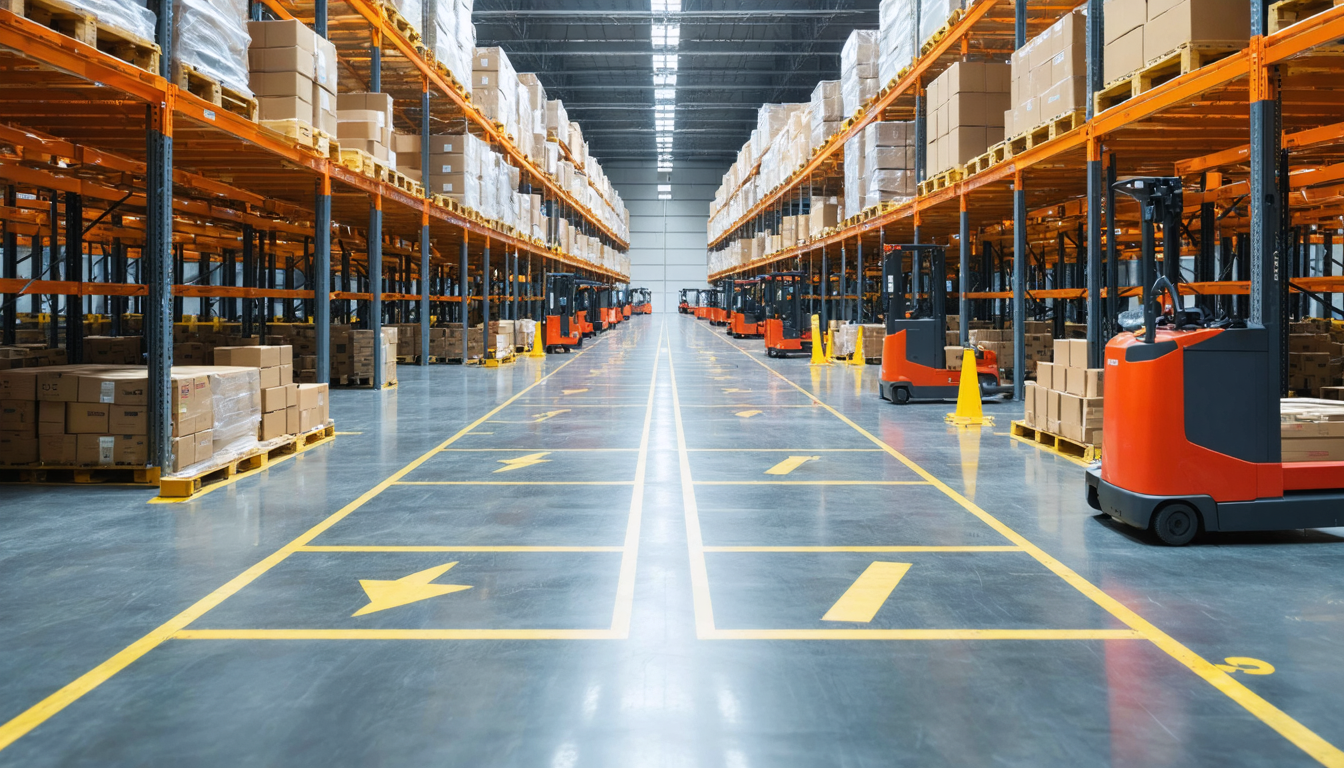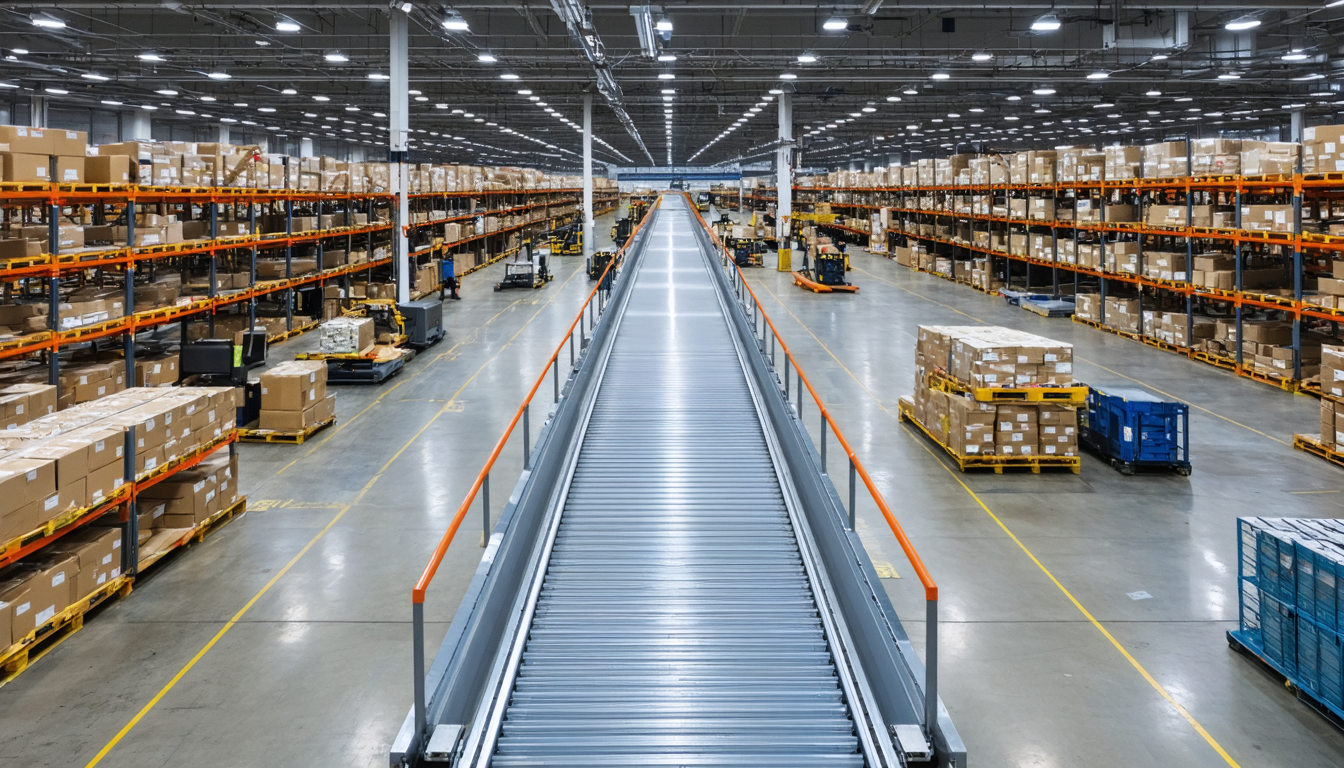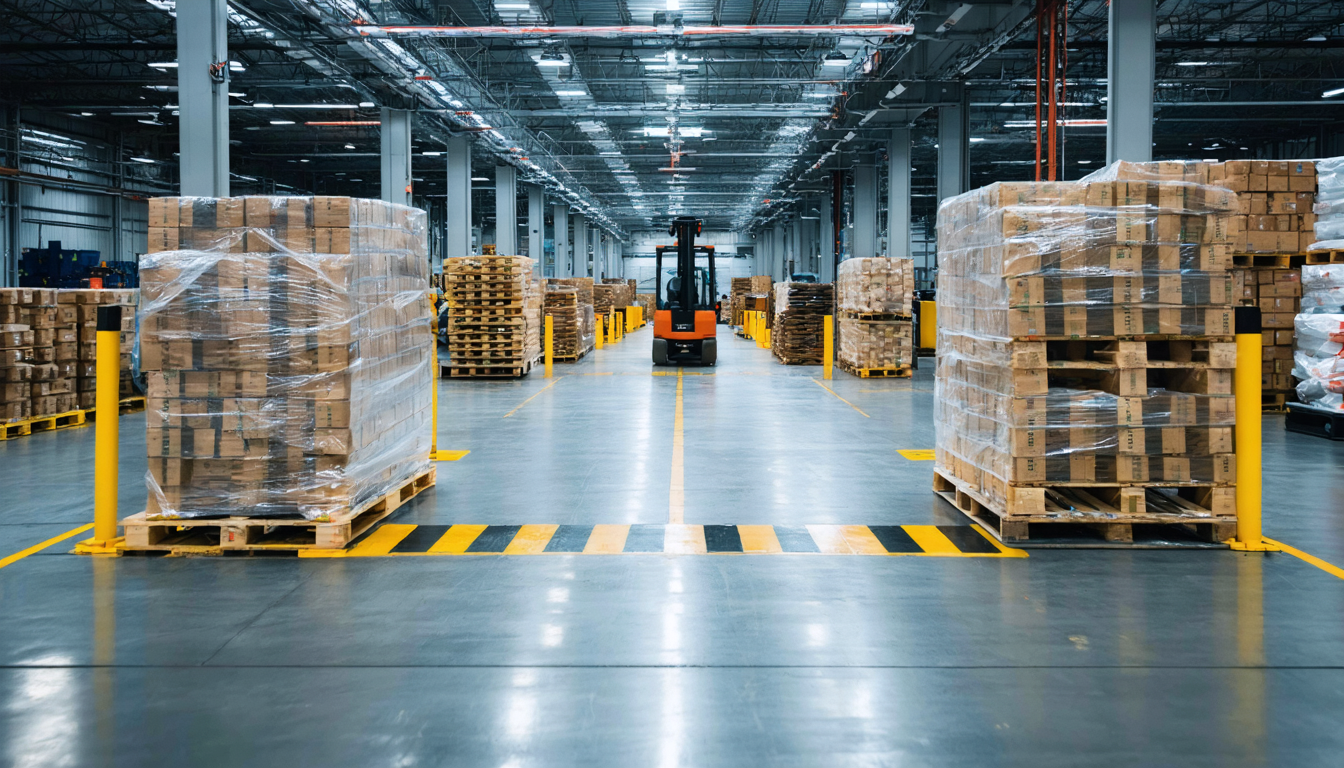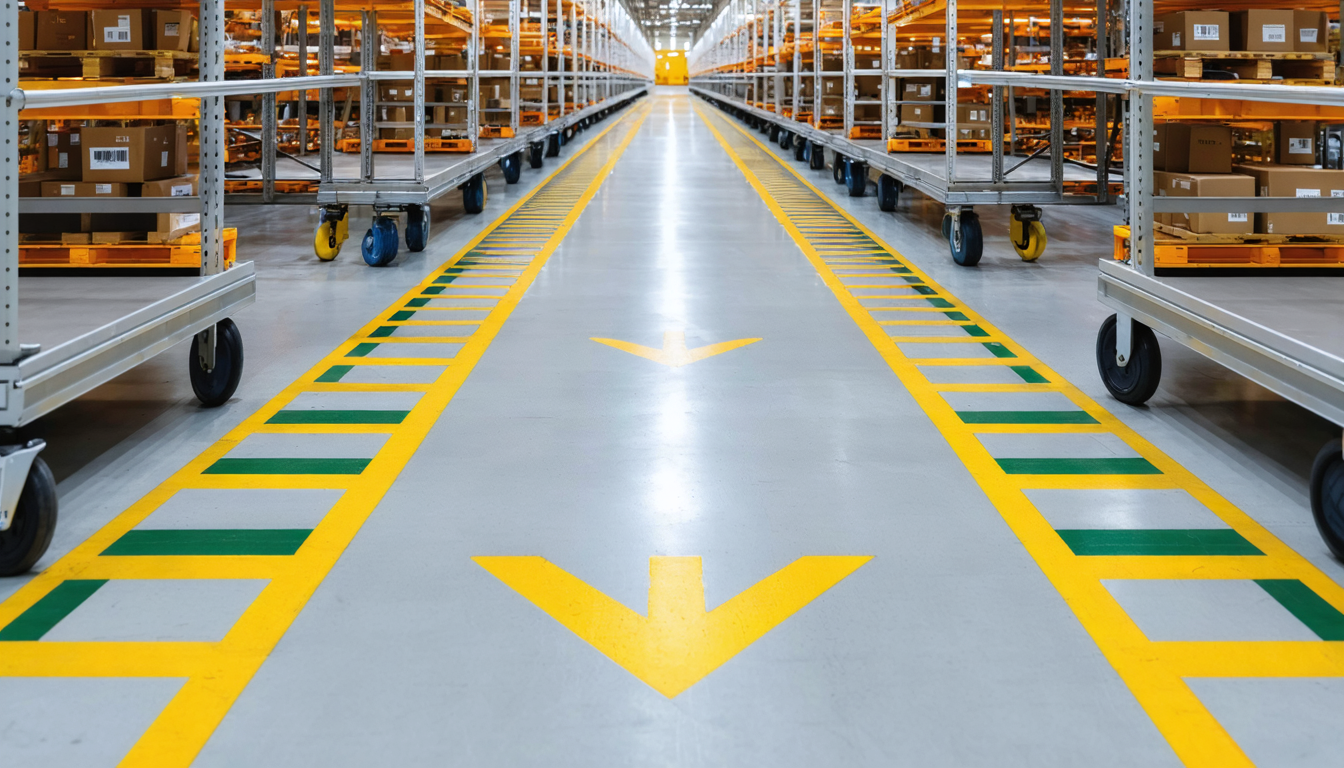Every year, musculoskeletal disorders (MSDs) create substantial costs for logistics operations in time, productivity, and operational momentum. In 2023 alone, MSDs accounted for 27.7% of all serious work-related injuries in private industry, with 488,040 cases reported (Source: BLS, 2023). For the logistics sector, the stakes are even higher, as warehousing and delivery workers are particularly susceptible to these types of injuries.
Yet, MSDs are not an inevitable cost of doing business. With the right safety protocols, ergonomic upgrades, and emerging tech like AI-powered video analytics, logistics leaders are moving from reactive approaches to anticipatory, day-to-day injury mitigation. This guide breaks down the costs, root causes, and a clear framework for mitigating MSDs—showing how video intelligence supports your frontline safety teams.
Why musculoskeletal disorder accidents are a major cost driver in logistics
MSDs are a leading source of lost-time incidents, workers’ compensation claims, and operational challenges in logistics. These injuries, which include strains, sprains, back injuries, and repetitive motion disorders, are driven by the physical demands of material handling, fast-paced workflows, and long hours on the warehouse floor or loading dock floor.
The financial impact is considerable, with direct costs for a single claim often reaching tens of thousands of dollars when factoring in absenteeism and compensation. These expenses are further magnified by indirect costs—like temporary staffing, overtime, and productivity losses.
The top 4 reasons for musculoskeletal disorder accidents in logistics—and how to mitigate them
Here are four common triggers for MSDs in logistics, with practical mitigation tips and guidance on how AI-powered video analytics can help shift your program from reactive to insight-driven.
1. Overexertion in Lifting (Single Episode)

The Hazard:
A warehouse picker grabs a heavy box off a high shelf, twisting awkwardly to place it on a cart. In a rush to meet a tight deadline, he ignores proper form and feels a sharp pain in his back. Overexertion in a single lift is a frequently reported cause of MSDs in logistics.
Traditional Mitigation Methods:
Manual lifting training during onboarding
“Lift with your legs” safety posters and reminders
Use of mechanical aids like forklifts or pallet jacks where available
Encouraging team lifts for oversized items
How AI Amplifies Mitigation:
AI video analytics can detect postures associated with unsafe lifting, such as bending at the waist instead of the knees or twisting while holding a heavy load. By flagging these events, the system provides safety managers with specific examples of at-risk behavior for targeted coaching. This transforms training from a one-time event into a continuous improvement loop, allowing teams to proactively correct unsafe habits and guard against injuries.
2. Repetitive Motions and Awkward Postures

The Hazard:
A sorter spends hours scanning packages at a fixed conveyor, reaching and twisting repeatedly to place each parcel on the correct chute. Over the course of a shift, these micro-movements accumulate, leading to strain and soreness in the wrists, shoulders, and back.
Traditional Mitigation Methods:
Periodic ergonomic assessments of workstations
Scheduled micro-breaks and job rotation
Anti-fatigue mats and adjustable workstation heights
Annual refresher training on posture and movement
How AI Amplifies Mitigation:
AI-powered systems can detect “crowding” at workstations, which can indicate areas with high ergonomic risk from repetitive tasks. By reviewing footage of these high-traffic areas, teams can better understand workflow patterns and identify opportunities for workstation redesign to reduce repetitive strain.
3. Compressed or Pinched by Shifting Objects or Equipment

The Hazard:
A loader stacks pallets too high and, as a forklift maneuvers nearby, a box shifts and pinches his hand between the load and the racking system. These events are another common MSD trigger, often resulting in finger or hand injuries.
Traditional Mitigation:
Safety briefings on proper stacking and racking
Use of gloves and PPE reminders
Visual checks for load stability before moving equipment
Incident reporting and investigation after the fact
How AI Amplifies Mitigation:
AI-powered video analytics can monitor for proper load stacking and handling procedures, flagging deviations from standard operating procedures (SOPs). Reviewing this footage helps teams identify where training needs reinforcement or where processes can be improved to ensure loads are stable before being moved, reducing the risk of shifting objects.
4. Overexertion in Pushing, Pulling, or Turning

The Hazard:
A dock worker pushes a loaded cart up a ramp. The cart’s wheels catch, forcing him to exert more force and twist his torso sharply—leading to a pulled abdominal muscle. Overexertion from pushing or pulling is a common cause of MSDs, emphasizing the need for both proper technique and mechanical assistance.
Traditional Mitigation:
Mandating use of dollies, carts, and powered movers
Floor markings and ramp signage to indicate safe paths
Team-based movement for heavy or awkward loads
Routine maintenance of carts and wheels
How AI Amplifies Mitigation:
AI video systems can be configured to detect “running” or sudden, unsafe movements—often a sign that a worker is struggling with a load or is forced to move too quickly. Reviewing flagged footage helps supervisors identify workflow bottlenecks or process breakdowns that may be driving unsafe pushing or pulling, informing smarter process redesign.
How to integrate an AI camera system into your logistics workflow
Bringing AI-driven video analytics into your logistics workflow doesn’t mean ripping out your current cameras or starting from scratch. Today’s leading solutions are designed to work with your existing infrastructure—including standard POE (Power over Ethernet) cameras—so you can overlay smart analytics without expensive hardware upgrades.
Key Differences: Traditional NVR vs. AI-Driven Cloud NVR
Feature | Traditional NVR System | Modern AI-Driven Cloud NVR |
|---|---|---|
Camera Compatibility | Requires new/specific models | Works with existing POE/legacy cams |
Storage | On-premise hardware | Secure, cloud-native, scalable |
Maintenance | Frequent, on-site | Minimal, remote updates |
User Access | Limited seats | Unlimited users, unified dashboard |
Video Review | Manual, slow | AI-powered search & incident detection |
Actionable Insights | Passive footage | Alerts for specific events (e.g., process deviations, workflow blockages) |
With a cloud-based AI camera platform, your existing cameras can provide AI-driven insights—bridged to a secure, cloud-native dashboard. There’s no need for bulky on-premise servers. Unlimited team members can review incidents, receive real-time alerts, and collaborate across shifts—all from a single dashboard.
Unlike a standard NVR system, the AI layer surfaces key operational events—like process deviations, crowding, or workflow bottlenecks—so your team can respond quickly to address risks.
Practical Integration Tips:
Evaluate your current camera coverage and identify high-risk zones—loading docks, picking lines, conveyor belts, and receiving areas.
Involve your safety, operations, and IT teams early in the process to ensure seamless integration and buy-in.
Choose a platform that offers event-based analytics and unlimited user access, supporting collaborative safety efforts.
Align video insights with your existing safety programs—use incident data for targeted retraining, facility upgrades, and compliance audits.
Pilot the system in a high-risk or inefficient area, review outcomes, then scale based on data-driven improvements.
Use video AI to support a proactive safety culture
Effective logistics safety programs blend people-first protocols with scalable technology. By layering AI video analytics onto your existing camera infrastructure, you empower your frontline teams to identify MSD risks before they escalate, which helps reduce injuries, keep operations on track, and foster a stronger culture of safety.
Ready to see how AI-backed video analytics can support your logistics safety goals? Book a safety consultation with Spot AI’s logistics safety experts for guidance tailored to your operations. Book a safety consultation.
Frequently asked questions
What are the main causes of musculoskeletal disorders in logistics?
The leading causes are overexertion in lifting, repetitive motions and awkward postures, being pinched or compressed by shifting objects or equipment, overexertion in pushing or pulling.
How can logistics organizations implement safety technology without disrupting operations?
AI camera platforms connect directly to your existing cameras, overlaying analytics without interrupting daily workflows. They automate event detection and reporting, freeing up your staff to focus on moving product safely and efficiently.
Are there compliance standards for MSD risk mitigation in logistics?
Yes. While OSHA relies on the General Duty Clause for MSD enforcement (Source: OSHA), employers must address recognized ergonomic hazards. Some states, like Minnesota, have also introduced specific ergonomics requirements that mandate risk assessments and training in high-risk industries.
What practical steps should logistics teams take before adopting AI camera technology?
Start with a safety risk assessment to identify high-traffic and high-risk zones. Involve your safety, operations, and IT teams early. Pilot the system in a specific high-risk area, review the impact, and expand based on real-world insights.
How does AI video analytics help with incident investigations in logistics?
AI-powered platforms automatically flag key events—such as process deviations or workflow anomalies—making it easy to review footage, pinpoint root causes, and support more accurate, faster investigations for compliance and safety improvement.
What impact can improved safety have on worker morale and retention?
When teams see safety prioritized—and incidents go down—morale improves. Fewer injuries mean less stress, stronger trust between management and staff, and a more positive workplace culture, all of which support retention.
How can safety technology help reduce stress for safety professionals?
AI-driven analytics take the manual work out of detection of specific unsafe events and reporting. Safety professionals can spend more time coaching, planning, and supporting their teams—instead of reacting to every incident—leading to less stress and better outcomes.
What is the best video monitoring system for warehouses?
The best systems for warehouses integrate with your existing cameras, eliminating costly hardware replacements. They should be built on a secure, cloud-native platform that offers unlimited user access and AI-powered analytics to proactively identify operational risks, rather than just passively recording footage. This transforms your cameras into a collaborative tool for safety and efficiency.
About the author
Joshua Foster is an IT Systems Engineer at Spot AI, where he focuses on designing and securing scalable enterprise networks, managing cloud-integrated infrastructure, and automating system workflows to enhance operational efficiency. He is passionate about cross-functional collaboration and takes pride in delivering robust technical solutions that empower both the Spot AI team and its customers.

























.png)
.png)
.png)